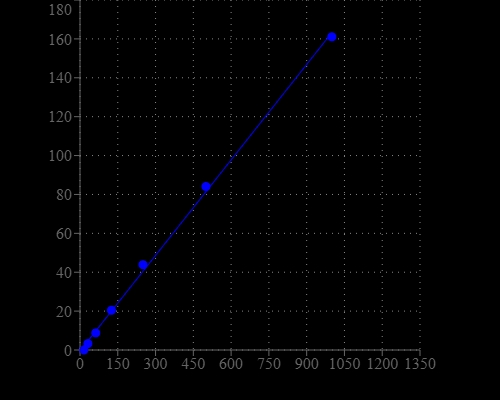StrandBrite™ Green RNA Quantifying Reagent
200X DMSO Solution
Detecting and quantitating small amounts of RNA is extremely important for a wide variety of molecular biology procedures such as measuring yields of in vitro transcribed RNA and measuring RNA concentrations before performing Northern blot analysis, S1 nuclease assays, RNase protection assays, cDNA library preparation, reverse transcription PCR, and differential display PCR. The most commonly used technique for measuring nucleic acid concentration is the determination of absorbance at 260 nm. The major disadvantage of the absorbance-based method is the interferences caused by proteins, free nucleotides and other UV absorbing compounds. The use of sensitive, fluorescent nucleic acid stains alleviates this interference problem. StrandBrite™ RNA quantifying reagent is an ultrasensitive fluorescent nucleic acid stain for quantitating RNA in solution. It is a positively charged fluorescent probe that binds to the hydrophobic pockets of RNA and forms a highly luminescent complex through the synergistic actions of stacking, hydrophobic forces, hydrogen bonding and electrostatic interactions. StrandBrite™ RNA quantifying reagent has extremely low inherent fluorescence that is significantly enhanced upon binding to RNAs, resulting in a great enhancement in its fluorescence. StrandBrite™ RNA quantifying reagent can detect as little as 5 ng/mL RNA with a fluorescence microplate reader or fluorometer.


| Catalog | Size | Price | Quantity |
|---|---|---|---|
| 17610 | 1 ml | Price | |
| 17611 | 10 ml | Price |
Physical properties
| Molecular weight | N/A |
| Solvent | DMSO |
Spectral properties
| Excitation (nm) | 509 |
| Emission (nm) | 527 |
Storage, safety and handling
| H-phrase | H303, H313, H340 |
| Hazard symbol | T |
| Intended use | Research Use Only (RUO) |
| R-phrase | R20, R21, R68 |
| Storage | Freeze (< -15 °C); Minimize light exposure |
| UNSPSC | 41116134 |
Instrument settings
| Fluorescence microplate reader | |
| Excitation | 490 nm |
| Emission | 525 nm |
| Cutoff | 515 nm |
| Recommended plate | Solid black |
Documents
Contact us
| Telephone | |
| Fax | |
| sales@aatbio.com | |
| International | See distributors |
| Bulk request | Inquire |
| Custom size | Inquire |
| Technical Support | Contact us |
| Request quotation | Request |
| Purchase order | Send to sales@aatbio.com |
| Shipping | Standard overnight for United States, inquire for international |
Page updated on January 2, 2026

